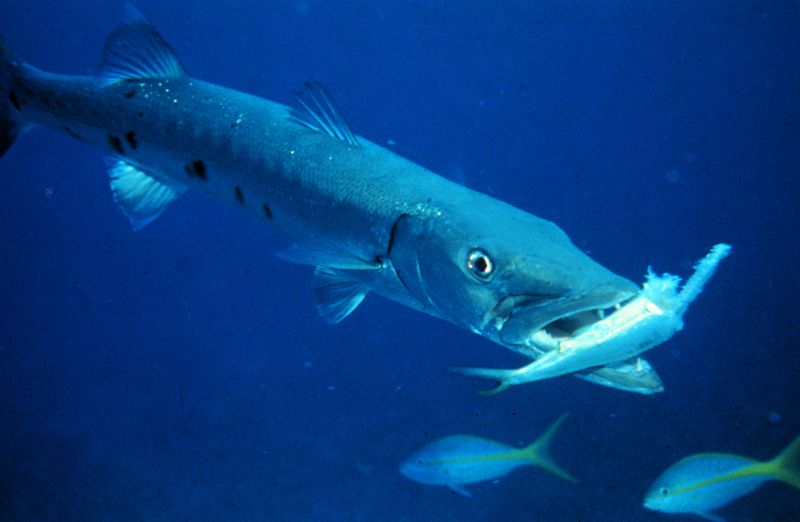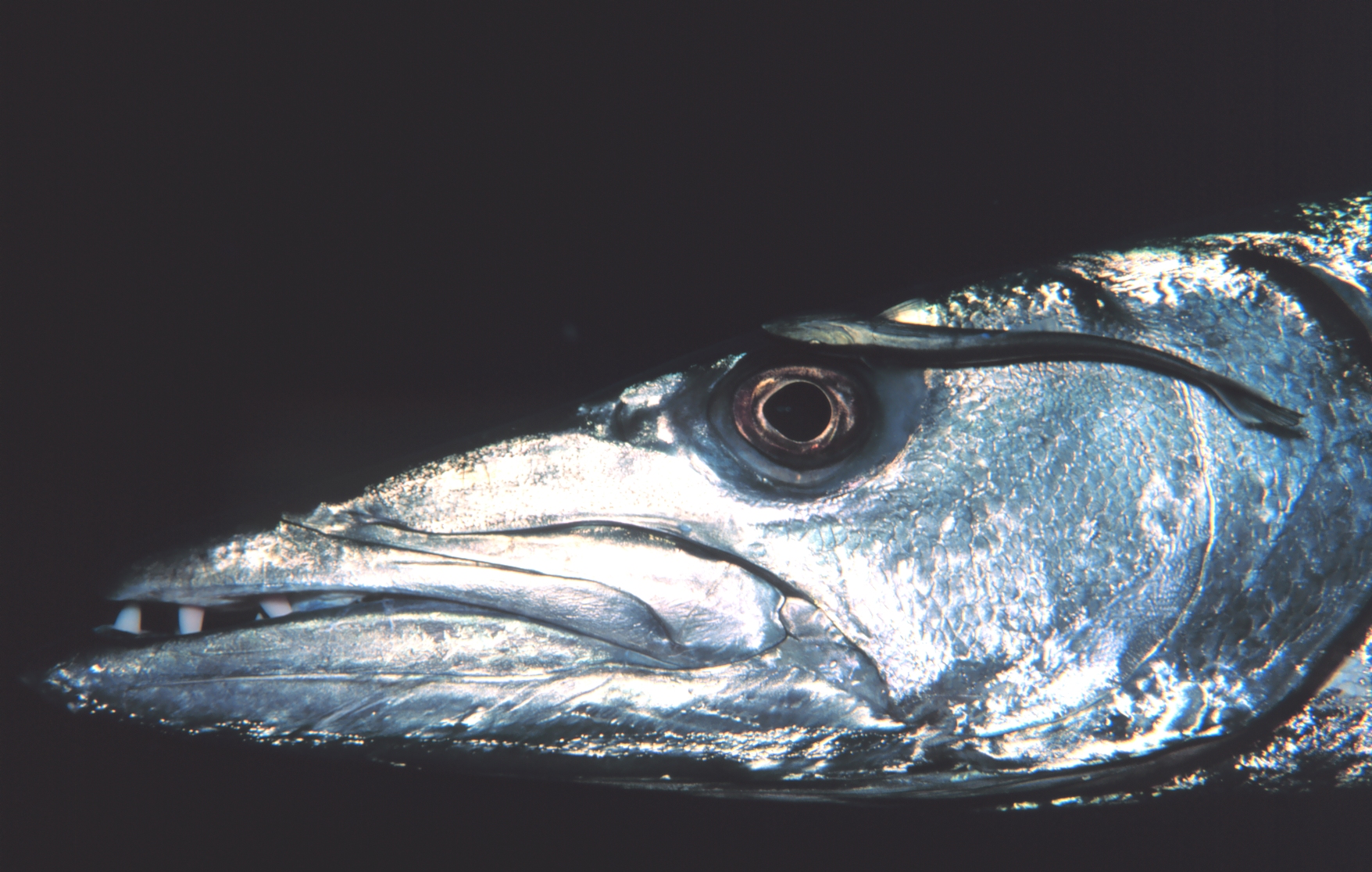|
As the dominant predator on the reef,
the great barracuda is known to eat an array of prey items including
herring, sardine, puffer fish, octopus, and small tuna. The great barracuda
have no real threats as predators, however a lucky
dolphin or shark can occasionally catch them. What is interesting about the barracuda is
not so much what they eat, but how they acquire their food.
One method used by the barracuda to
catch their prey is schooling; barracuda are normally thought of as solitary
animals, but often they can be found swimming through the
oceans in very
large groups. Barracuda use schooling techniques both to better detect prey
and to trap schools of smaller fish.
 However,
the adaptation that makes them such successful predators is their ability to
capture prey larger than the gape of their own jaws. Their acute vision and
olfactory senses, spear-like under bite, and muscle and skeletal design
around the jaws all help in the capture of a variety of prey. A barracuda’s
strike begins with a sudden acceleration toward its prey, then once the prey
has contacted the back of the mouth, the jaws are snapped together extremely fast. The animal is sliced open with razor sharp teeth, then the barracuda
uses more powerful bites and head shakes to actually break the animal in
half (example shown in the picture above), allowing the barracuda to consume prey larger than its mouth by
breaking it into several pieces. However,
the adaptation that makes them such successful predators is their ability to
capture prey larger than the gape of their own jaws. Their acute vision and
olfactory senses, spear-like under bite, and muscle and skeletal design
around the jaws all help in the capture of a variety of prey. A barracuda’s
strike begins with a sudden acceleration toward its prey, then once the prey
has contacted the back of the mouth, the jaws are snapped together extremely fast. The animal is sliced open with razor sharp teeth, then the barracuda
uses more powerful bites and head shakes to actually break the animal in
half (example shown in the picture above), allowing the barracuda to consume prey larger than its mouth by
breaking it into several pieces.
The anatomy of the lower jaw is designed to
produce maximum force at the back of the jaw to quickly break the prey into
bits. The teeth are spaced out so that when the barracuda closes its
mouth, the teeth stack between each other, closing all the gaps. This
means that once the barracuda has hold of a fish, there is no way to
escape without leaving a part of itself behind. barracuda closes its
mouth, the teeth stack between each other, closing all the gaps. This
means that once the barracuda has hold of a fish, there is no way to
escape without leaving a part of itself behind.
Click to read about the
Great Barracuda's interactions with other organisms!
|

